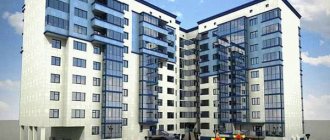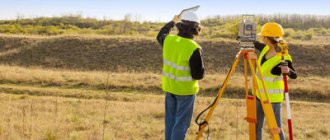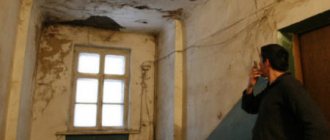In 2021, new rules apply for recognizing an apartment building as unsafe and subject to demolition or reconstruction. The procedure for resettlement from emergency housing has also changed. Legislator:
— formulated the basis on which the apartment building is recognized as unsafe and subject to demolition or reconstruction; — supplemented the rules for working with documents that the local self-government body receives and prepares after assessing and inspecting a house; — provided for new mechanisms for resettlement from emergency housing; — determined for which emergency buildings the decision on demolition or reconstruction is made by the local self-government body; — established a new procedure for calculating the amount of compensation for seized premises.
Document: New rules for recognizing a house as unsafe are in Government Decree No. 1535 dated November 29, 2019. It amended the regulations approved by Government Decree No. 47 dated January 28, 2006 (hereinafter referred to as Regulation No. 47)
It became clear on what basis to recognize apartment buildings as emergency
According to the new rules, an apartment building is recognized as unsafe and subject to demolition or reconstruction if its load-bearing building structures or the entire house as a whole are in emergency technical condition.
There are two signs of emergency technical condition of building structures.
1. Damage and deformation, which indicate the exhaustion of the bearing capacity and the danger of collapse of an apartment building.
2. Rolls, which can cause the house to lose stability.
Both characteristics are indicated in the new version of paragraph 34 of Regulation No. 47.
Deadlines
After receiving an application from the property owner, the local administration reviews it within about a month. Further:
- Notification of interested parties about the beginning of the formation of the commission: up to 10 days.
- Drawing up a specific list of commission members: up to 7 days.
- Approval of the composition of the commission: up to 7 days.
- Approval of the committee chairman: up to 10 days.
- Inspection of the object and generation of a report: individually. Rarely more than 1 month, more often – up to 1 week.
- Making a decision by the commission and notifying the property owner: up to 5 days.
- Making a final decision by the local administration based on the decision of the commission: up to 30 days.
FREE CONSULTATIONS are available for you! If you want to solve exactly your problem, then
:
- describe your situation to a lawyer in an online chat;
- write a question in the form below;
Walking around the city, we come across cafes, hairdressers, auto repair shops, shopping centers and other commercial facilities. Some are in new buildings, while others are in disrepair. Non-residential buildings declared unsuitable are included in the emergency real estate. Subsequently, they are subject to dismantling work (demolition).
Expert opinion
Makarov Igor Tarasovich
Legal consultant with 8 years of experience. Specialization: criminal law. Extensive experience in document examination.
Questions arise: what are the signs to determine whether a non-residential property is in danger of being damaged? Is the procedure different from declaring residential buildings unfit? What is the right for the owners of such buildings? We described the features of the procedure in our article.
The commission and the LSG body set deadlines for working with documents
The legislator established more specific rules for the work of the commission for assessing and examining apartment buildings. It is she who decides whether there are grounds to recognize the house as unsafe and subject to demolition or reconstruction. The commission sets out its conclusions in the conclusion. It is drawn up on the form from Appendix No. 1 to Regulation No. 47.
Sample 1—at the end of the article.
The commission sends two copies of the conclusion to the local self-government body. According to the new rules, she must do this within three days after she issued the conclusion. In the old version of Regulation No. 47, the deadline was not specified.
Sample 2 is at the end of the article.
After the LSG body has received the commission’s conclusion, it must make a decision on the house. Reflect it in a municipal act (see sample 2). If you have recognized the apartment building as unsafe and subject to demolition or reconstruction, send the decision, along with the commission’s conclusion, to the applicant and to the municipal housing control body at the location of the house. The deadline is five days from the day you made the decision. It is not necessary to send paper documents. You can send them electronically via the Internet, including through a single or regional portal of state and municipal services.
Step-by-step instruction
An action plan for recognizing a non-residential building as unsafe may include the following steps:
- Submitting an application to the department of urban services or housing policy (depending on the region).
- Consideration of the application within the established period of 30 days.
- Convening an interdepartmental commission from among specialists from the Ministry of Emergency Situations, the Sanitary and Epidemiological Station, Housing Supervision + interested property owners.
- Concluding a municipal contract with experts in the field of technical inspection of premises.
- Inspection of a non-residential building, generation of reports and recommendations.
- Voting of the commission members, counting of votes and drawing up the final decision - should the building be recognized as unsafe or not?
- Notifying the local administration, sending copies of documents.
- Discussion of the results of the commission’s work, creation of a resolution on recognition/non-recognition of the house as unsafe.
- Distribution of notices to the owners of non-residential properties.
- A set of measures based on the decision made - closure of the organization, change of legal address, preparation for demolition or renovation, etc.
The legislation determines that instead of housing rights, the owner of an emergency non-residential building is entitled to compensation . It is expressed in monetary terms.
The amount of compensation should include not only the market value of the property, but also the losses of the owner. It is also possible to agree on the provision of an equivalent non-residential building/premises, for example, in one of the residential buildings in the area.
LSG bodies now make decisions not only on municipal buildings
Local self-government bodies now have the authority to declare residential premises of not only municipal, but also private housing stock unsuitable for habitation. The same rule is established for apartment buildings: recognizing a house as unsafe and subject to demolition or reconstruction is almost always the authority of the local self-government body. An exception is MKD, all residential premises in which are owned by the Russian Federation or the region. Previously, these powers of the local government body extended only to residential premises and apartment buildings that belong to the municipal housing stock.
Signs of an accident
When talking about accidents, we mean a significant violation of the technical elements of the building. Damage, deformation, risk of collapse, problems with communications - all these are signs of the unsuitable condition of a non-residential structure.
The features of identifying and recognizing the emergency status of commercial buildings are prescribed in the regulatory framework, namely clause 21, part III of the Decree of the Government of the Russian Federation No. 577 of May 17, 2021. The provisions affect non-residential and residential properties, with the exception of apartment buildings.
Signs of trouble include:
- Damage or deformation of load-bearing and enclosing elements of a non-residential building , for example - partial collapse of walls, malfunction of engineering components, sewerage, ventilation, heat and electricity supplies.
- Fire, accident, domestic explosion and other disruption in the operation of the facility . Restoring such a building is either physically impossible or requires significant financial costs. Most often, a decision is made to demolish an emergency facility and build a new structure in its place.
For example, a fire in the upper tier of a school building. The classrooms on the top floor were completely burned out, and part of the assembly hall and technical rooms were affected. The building is unsuitable for conducting lessons. Local authorities and the education department make a decision on the demolition of an emergency facility. A budget is allocated for the construction of a new school.
- Location in a zone of natural disasters or man-made accident . If there is no way to protect the building, it enters the emergency risk zone. Even if people do not live in it, the object is subject to dismantling (demolition).
Expert opinion
Dmitry Nosikov
Lawyer. Specialization: family and housing law.
The final decision on the unsafety of a non-residential building rests with the administration of the municipality. This does not always suit the owners of the property. Often, a decision to demolish is made on the basis that the building is formally located in a dangerous place, for example, a mountainous area with a risk of rockfall (resort area). Recognition of a non-residential property as unsafe opens up the possibility of developing the territory. The owner will receive minimal compensation - he will have to look for a new place for his activities. It gets to the point where disputes spill over into the courts.
New mechanisms for resettlement from dilapidated houses have emerged
Document: Federal Law No. 473-FZ dated December 27, 2019 amended the Housing Code and Federal Law No. 185-FZ dated July 21, 2007 “On the Fund for Assistance to the Reform of Housing and Communal Services”
If an apartment building is recognized as unsafe, all residential premises in it become unsuitable for living (clause 4, article 15 of the Housing Code). The residents need to be resettled. Law No. 473-FZ preserved all existing mechanisms for resettlement from emergency housing and introduced new ones.
Regional authorities may introduce additional housing support measures for apartment owners in emergency apartment buildings. For example, the region can provide such citizens with subsidies to offset part of the costs of purchasing new housing. Those who own an apartment in a dilapidated building and decide to buy a new one on credit can count on compensation for mortgage loans. At the same time, it will be possible to use federal budget funds to subsidize preferential mortgages and create flexible housing stock.
New support measures will not be available to all residents of houses recognized as emergency in accordance with the procedure established by law. On the date the apartment building is recognized as unsafe, the owner should not own any other residential premises suitable for permanent residence. The region will not provide support to those who rent another residential premises under a lease agreement or occupy it on a social tenancy basis.
Customer of the service
The procedure for recognizing a building as unsafe
regulated by law, consists of stages:
- visual inspection
- technical examination
At the first stage, experienced specialists find distortions, displacements, deformations of foundations, main walls, rafter systems, roofing, thermal and waterproofing elements. Then measurements of the magnitude of these defects are carried out, the data is compared with possibly acceptable figures when integrity can be restored by major repairs.
Expert opinion
Makarov Igor Tarasovich
Legal consultant with 8 years of experience. Specialization: criminal law. Extensive experience in document examination.
In addition, background radiation is measured, samples of water, soil, concrete, and other materials used in power structures are taken to determine fatigue and temporary damage.
The service can be ordered by apartment owners in a building that they consider unsuitable for habitation. There are authorities authorized to supervise and control the accident rate of objects in the entrusted territory.
The initiative for the survey may come from them. The procedure for recognizing a non-residential building as unsafe
replicates previous research. The composition of the commission does not differ from the original one; the decision is also made by the act signed by all participants.
Region LLC specialists are ready to provide assistance at all stages, both at the stage of reviewing the project concept and at the stage of preparing technical specifications for the survey, and, if necessary, for design.
The experience of our specialists allows us to solve the most complex engineering problems in the optimal time and offer the customer a competitive price for design and survey work.
Real estate objects that are not residential premises may also be considered unsafe. The authority to recognize them as subject to demolition is vested in the local government body. However, this procedure is much more complicated than for residential real estate. Let's consider how to recognize non-residential premises as unsafe.
We will have to pay more for residential premises seized for municipal needs
Note: Follow the new rule also in cases where you withdraw housing in connection with the seizure of the land plot on which the house is located
When local authorities resettle a dilapidated building, they seize the housing for municipal needs. In this case, the owners of residential premises must be paid compensation. Include in this amount the market value of not only the premises and common property in the apartment building, but also the land plot on which the house is located. This requirement is specified in the new edition of Part 7 of Article 32 of the Housing Code. An increase in the amount of compensation is an additional measure of support for citizens who are being relocated from emergency housing stock.
Where to go to have a building declared unsafe?
The local administration of any locality independently compiles a list of objects that need inspection. If a non-residential building that needs to be recognized as unsafe is included in this list, then there is no need to apply anywhere; the administration, represented by an interdepartmental commission, will independently conduct an inspection and notify the owner of its results.
Articles on the topic (click to view)
- Fine for illegal construction on your site
- Is it necessary to register a garden house on tubular posts (stilts)?
- Rules and restrictions when using the local area of an apartment building
- Communal apartment: how life is organized in a mini-state
- Part of a house or an apartment? How to register a plot of land adjacent to a house?
- Organization of a hostel in a residential building: legislation, recommendations
- 5.7.5 Essential terms of the apartment building management agreement
If the building is not on the specified list, then you can write an application to the local administration requesting an inspection. There is no need to look for special organizations or take any additional actions - one application is enough.
If there is no reaction to it, you can immediately go to court and demand a forced inspection.
We secured the right of residents of emergency buildings to temporary housing from the flexible fund
If it is dangerous to stay in a dilapidated building, its residents have the right to receive temporary housing from the flexible fund at the municipal or regional level. This guarantee did not previously apply to residents of houses recognized as unsafe. Now, in such a situation, the local self-government body must allocate temporary housing at the first request of a citizen.
Provide temporary housing from a flexible fund for a period of no more than two years. During this time, you must pay the citizen compensation to purchase a new apartment or provide him with new housing.
Where to begin?
Real estate objects are subject to monitoring and inspection by the authorities. Commissions monitor the condition of buildings, assess the level of damage and their danger to people. Therefore, if a non-residential building is already included in the “emergency” list, it will be checked as part of the priority list.
If the property is not listed in any address register, the owner will have to submit an application. Thus, he initiates an extraordinary check. This will help the authorities declare another non-residential structure unfit.
We determined the conditions for financial support for relocation from dilapidated houses
It is now possible to spend subsidies from budgets of all levels to solve the problem of emergency housing. The law allows them to be distinguished:
— residents of dilapidated buildings — for the purchase of new housing; — companies that implement projects for the development of built-up areas or integrated development of territories; - citizens who have the right to receive compensation for seized premises.
First of all, it is envisaged to provide subsidies to developers who have concluded agreements with local self-government bodies on the integrated development of built-up areas. The subsidy compensates for the costs of fulfilling obligations to create and transfer residential premises to municipal ownership for citizens resettled from dilapidated houses. Such a subsidy should not exceed 25 percent of the standard resettlement cost. It is calculated based on the total area of residential premises from which people were relocated and the standard cost per square meter.
The Housing and Communal Services Reform Assistance Fund will also provide funds for resettlement from dilapidated housing. If a region wants to receive financial support from the fund, it should not provide or use land plots on which emergency housing stock apartment buildings were located. An exception is cases when the site is provided for certain objects: for example, public utilities and social services, healthcare, education. Land plots that are cleared from dilapidated buildings at the expense of the federal budget can only be used for the construction of social facilities or for the creation of public spaces.
The region distributes the funds received from the fund among municipalities on whose territory there are unsafe houses. Municipalities, as usual, can learn about the amount of shared funding for relocation from dilapidated housing from local budget funds from the program of their region. But previously this volume was set for the entire period of the program. Now - only for the current and two subsequent years.
What is a non-residential building?
The definition follows directly from the name.
A non-residential building is an object intended for commercial and economic purposes, where there is no provision for human habitation. If the purpose of a residential building is to accommodate families, then the purpose of a non-residential building is a place for trade, provision of services, creation and storage of products, etc.
Non-residential objects are divided into several types in accordance with clause 2 of Art. 2 Federal Law No. 384 “Technical Regulations...” dated December 30, 2009. Legislatively it is possible to designate:
- A building is a real estate object in the form of a capital (solid) structure with a delimited space inside. Moreover, it can contain both residential and non-residential premises, for example, office premises.
- A room is a separate, isolated part of a building with its own purpose. Such premises can be located in a residential building, for example, a hairdresser on the ground floor of a high-rise building.
- A structure is a system object that consists of load-bearing and enclosing structures similar to a residential building. However, structures are considered non-residential buildings, for example, a factory complex for the production of concrete blocks.
As we noted, the building is a solid structure. Non-residential properties can also be located in an apartment building. Usually the first floors or “zero” (ground) floor are used. Moreover, several commercial organizations can operate in the house. Their owners either rent objects or buy apartments and transfer them to non-residential premises.
The classification of commercial premises is very diverse: offices, retail outlets, universal, warehouse, workshop (production), etc.
Example 1:
IP Alekseev won the auction for the purchase of land for construction. The entrepreneur agreed with the contractor to begin construction of the retail outlet. The completed object will be considered a building. The purpose of the exploitation will be to make a profit - IP Alekseev provided cosmetology services.
Example 2:
Individual entrepreneur Sergeeva was looking for a place to equip a women's hairdressing salon. Soon she liked one option with non-residential premises. The landlord rented out an office on the first floor of an apartment building (MKD). The total area fit into 2 residential apartments, which were purchased and converted into non-residential space. Individual entrepreneur Sergeeva contacted the landlord and entered into an office rental agreement. From now on, she owned the non-residential part of the apartment building on the first floor.
Creation of an interdepartmental commission
The commission is created by a decision of the local administration if the need arises for the integrated development of the territory.
| No. | Bodies whose representatives should be members of the commission |
| 1 | Fire safety |
| 2 | Environmental and sanitary safety |
| 3 | Bureau of Technical Inventory |
| 4 | Specialists authorized to prepare an expert opinion on project documentation |
| 5 | Administration officials from the architecture department |
The owners of the premises and other rights holders are included in the commission with the right to an advisory vote.
Within 10 days from the date of the decision on the creation of an interdepartmental commission, representatives of the administration are obliged to notify all interested parties about this.
These bodies are required to submit a list of candidates to the commission within 7 days from the date of notification.
Within 7 days from the receipt of information, the local government body forms the composition of the commission. This information is sent to the authorized bodies no later than 10 days after the first meeting.






